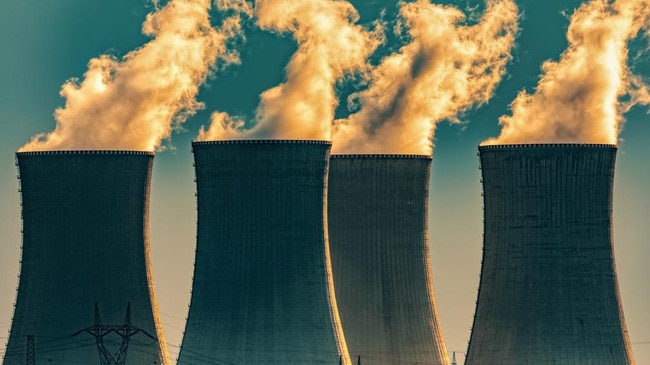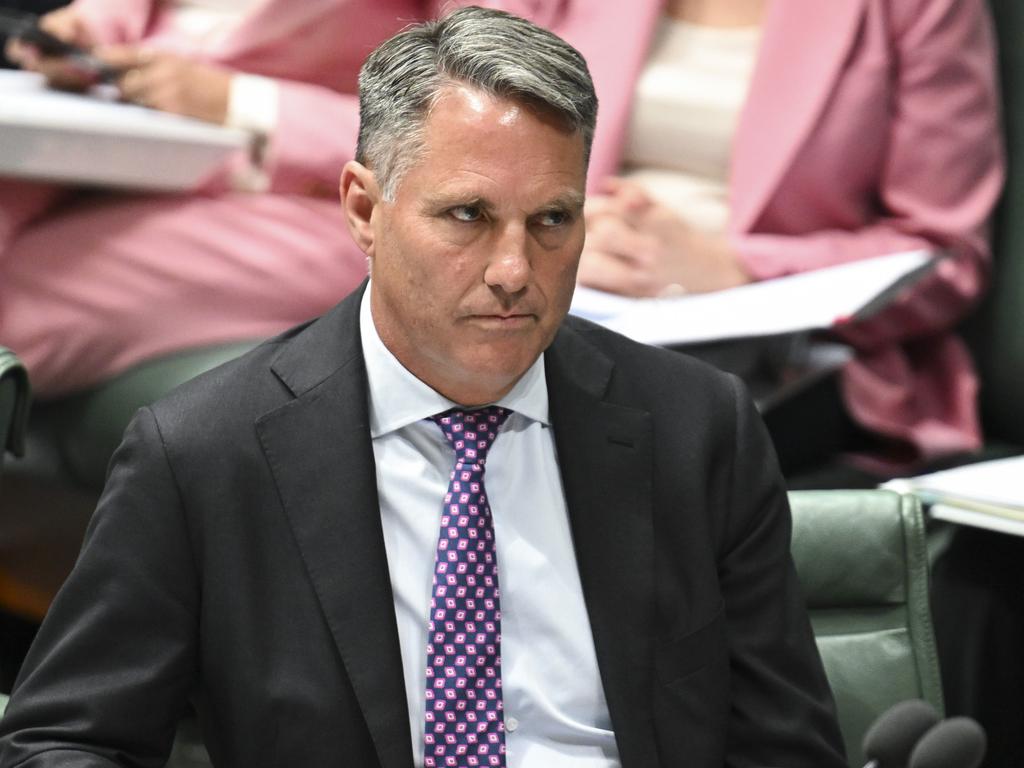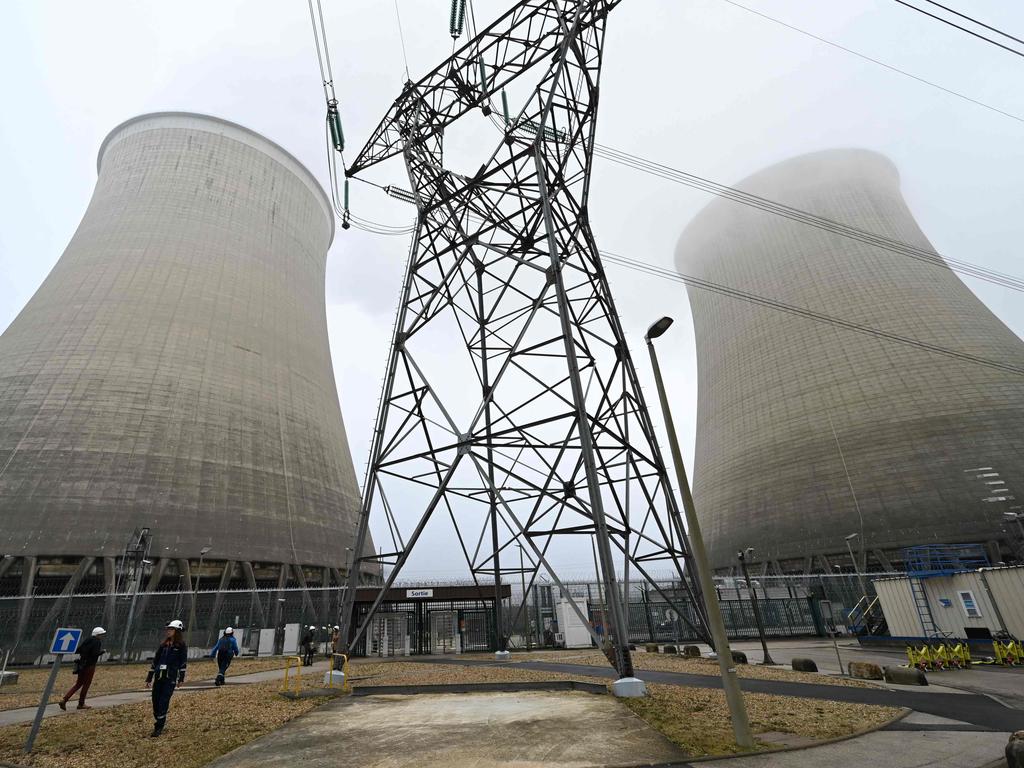Nation’s technological edge about to become much duller
Political expediency is behind the ‘catastrophic mistake’ of Australia withdrawing from an international forum researching fourth-generation nuclear power.

Developer Kairos Power will need to secure an operating licence before the plant can begin operations. But the company says its fluoride salt cooled high-temperature reactor “is a novel advanced reactor technology that aims to be cost competitive with natural gas in the US electricity market and to provide a long-term reduction in cost”.
Last month, Kairos signed an agreement with Google to deploy a US fleet of advanced nuclear-power projects totalling 500 megawatts by 2035. In June, Microsoft founder Bill Gates helped break ground for the construction of a sodium test reactor in Kemmerer, Wyoming by 2030.
The plants are small and still some way off, but they are the early fruits of decades of collaborative research. This makes the Albanese government’s decision to pull Australia from the Generation IV International Forum all the more remarkable. GIF is a grouping of countries that co-operate on research and development on next-generation nuclear-energy systems, with the aim of making fourth-generation nuclear available for deployment by 2030.
The forum’s work has identified six technologies for development: the gas-cooled fast reactor; the lead-cooled fast reactor; the molten-salt reactor; the sodium-cooled fast reactor; the supercritical water-cooled reactor; and the very high temperature reactor.
Bowen justified his decision to withdraw Australia from the research pact on the basis that solar worked better in Australia because London had only 1633 hours of sunshine in an average year, whereas Melbourne had 2362 hours.
Anyone listening to Bowen at COP29 and Deputy Prime Minister Richard Marles in parliament this week would think Australia had been a casual observer to what has been happening with nuclear around the world. But nothing could be further from the truth.
History is being rewritten to diminish Australia’s nuclear abilities and backstop the Albanese government’s renewables-only approach to the energy transition.
Australia has been deeply engaged at a global level with R&D of new-generation small-scale nuclear reactors, but we are being dealt out of the research push now because of political expediency. The nuclear roadblock has come to a head because the vehicle being used to collaborate on science and finance is being renewed and restructured to exclude Russia.
When British Energy Secretary Ed Miliband and US Deputy Secretary of Energy David Turk unveiled the new agreement at the COP29 climate conference in Baku this week, they had every reason to expect that Australia would continue with the program.
A press release issued by Miliband said: “The new agreement will come into force from 1 March 2025 and is expected to also be signed by: Canada, France, Japan, Republic of Korea, Republic of South Africa, China, Euratom, Switzerland and Australia.”
Instead, Bowen said Australia would not sign because we had no plans for a civilian nuclear industry. The suggestion was Australia had been an observer rather than a participant in the Gen IV project.
This is not correct. The process for Australia to join Gen IV is documented in the parliamentary records of the Joint Standing Committee on Treaties. To become fully involved in GIF’s research activities, Australia had to sign the GIF Framework Agreement and its extension. This is a treaty-level agreement and subject to a JSCOT examination. The proposal obtained bipartisan support and was signed in September 2017. The records show that to participate in the GIF, we had to follow a lengthy nomination process and demonstrate that we could contribute to the GIF’s R&D goals.
Through the Australian Nuclear Science and Technology Organisation, Australia has been a participant in two GIF research projects: the very high temperature reactor system, particularly in the area of the behaviour of structural materials at high temperatures and levels of irradiation; and the molten salt reactor system, focusing on materials corrosion and radiation damage assessment.
“Participation in the GIF is expected to help Australia maintain its national capacity as a leading-edge nuclear technology developer in material sciences and fuel technologies,” the JSCOT report said. “In particular … Australian industry membership will provide participation for Australian scientists and engineers, with avenues for collaboration in the world-leading teams developing our next generation of nuclear and related technologies and with access to the technologies themselves.”
ANSTO told JSCOT: “Australia possesses a technological lead in the development of materials that are expected to be used in generation IV reactors.”
The report concluded: “Questions of the future of nuclear energy in Australia aside, the Framework Agreement appears to offer significant opportunities for Australian research and technology for many years into the future. On that basis, the Committee supports Australia’s accession to the Framework Agreement.”
The deal was signed to enter the forum in June 2016, during Malcolm Turnbull’s period as prime minister. Which makes it all the more remarkable that Turnbull this week defended the decision to withdraw, telling The Australian Financial Review, “The job of the Australian prime minister is to stand up for Australia and recognise Australia has distinct interests and distinct characteristics. Simply falling into line and being some sort of sycophantic copier of everybody else’s agendas doesn’t bring you in any respect.”
Adi Paterson, the former ANSTO head who negotiated entry to the pact, says the withdrawal will be seen by allies as “an act of deep confusion”. He says it is a “catastrophic mistake” that will cement Australia’s exclusion from opportunities presented by research into nuclear power.
SMR Nuclear Technology technical director Tony Irwin says there are benefits in participating in the Gen IV program, including the ability to promote non-proliferation, safety and security issues in Gen IV reactor development.
“Membership of Gen IV enhances Australia’s reputation as the most advanced nuclear technology country in our region, which helps Australia retain its permanent seat on the IAEA board of governors and provides opportunities for Australian industry in advanced technologies,” he says. “It provides opportunities for Australian universities and organisations for partnerships and collaborations with overseas universities and research organisations, and increases Australia’s understanding of nuclear developments worldwide.”
Irwin says if Australia leaves GIF, our contribution to the development of Gen IV technologies will be lost and development times will be extended.
Asked by Inquirer what this means for ANSTO, the organisation replied: “We’re currently consulting with the Dept. Climate Change, Energy, Environment and Water on your query as this may need to be referred to their Minister.” At least we have the sun.








This week, while Climate Change and Energy Minister Chris Bowen was calculating the hours of sunlight that fall on Melbourne relative to London, nuclear regulators in the US gave the go-ahead for the construction of two small-scale molten salt nuclear reactors – the first electricity-producing fourth-generation plants to be approved for construction in the US.